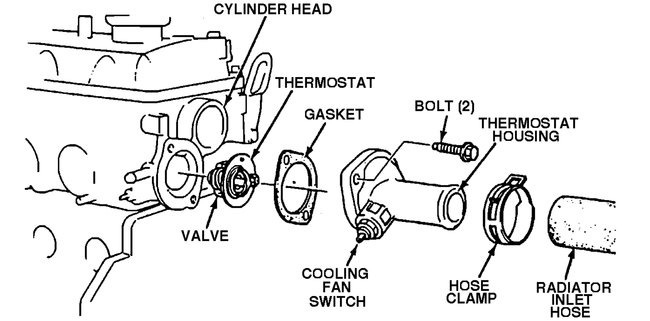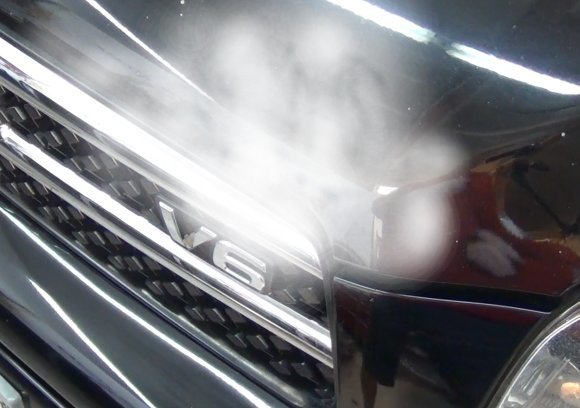Sunday, December 6th, 2020 AT 9:01 AM
So, the engine cylinder head, block and manifolds, wiring, lines and accessories are all installed after a rebuild. New thermostat was installed and all ready to go. I started the car, and it started after few cranking's (car hasn't been driven since the rebuild started 8 months ago- coolant dripped out of the tail pipe initially. The car has leaked coolant into the exhaust before the rebuild started last Spring). The engine is brought to operating temperature but I can't see gauge movements at all (the instrument panel needs replacement). On first attempt, the heater inside the car blows hot air. I feel the coolant system and something isn't right. The upper Radiator hose is ice cold after 15 minutes, the lower radiator hose is hot, the inlet and outlet heater core hoses are both hot and the radiator is ice cold top to bottom. The fan isn't kicking in but after testing it with direct current, it works. Next, I pressurized the system only to realize the idle bypass control valve coolant hose didn't have the clamp positioned correctly and the hose is dripping. Also, the main coolant bypass hose (the short curved hose up front near the exhaust) is leaking. I replaced the clamp to its correct position and replaced the Bypass hose with a new one. I emptied the coolant system, refilled the radiator and brought the engine to operating temperature: no leaks but the radiator does not want to empty into the blocks so I can add more coolant (the coolant is stagnant in the radiator). I squeezed the upper hose in an attempt to purge air and add more coolant. No go, it did not want any more coolant. The system has less than half the coolant it needs. After many attempts (all of which resulted in coolant gushing out of the radiator), I shut it down and did a coolant pressure test. It holds with no leaks, but I know there isn't enough coolant. A day later, I start all over, emptied, refilled (it won't take more than about 75 fluid ounces- full capacity is 201 fluid ounces or 6.3 quarts of coolant), heater on high and engine running for about 10 to 15 minutes: the results are bizarre (the opposite results of previous attempts: cold upper hose, cold lower hose, cold heater core hoses both inlet and outlet, heater blowing cold air inside the car and radiator stagnant dead with no flow). Now, the water pump isn't working as far as I am thinking but the thermostat maybe stuck closed. I separated the lower radiator hose while the car is running in attempt to feel any suctioning by the water pump, but I felt zero effect. The question here is very simple, can the water pump suction coolant if the lower radiator hose is placed in a bucket filled with fluid under the car (I am attempting to see if the water pump is working at all- does it draw fluid from the radiator through the lower radiator hose by suctioning force? Or does it do its circulation job by creating a centrifugal force not a suctioning force?)? Can a stuck closed thermostat cause the water to stay put in the radiator (preventing the water pump from circulating the coolant)? Does the water pump circulate fluid inside the engine before the thermostat opens? Could it be internal leak (I emptied some oil, and no coolant was present in the oil, and spark plugs were dry and not fouled at all)? If I remove the thermostat, run the car to operating temperature and separate the lower radiator hose from the radiator and stick it into a bucket filled with water, will I be able to observe coolant being suctioned if the water pump is working? I realize the system will lose pressure but can I observe initial suctioning? If the block or head have constriction(s) or blockage can that stop the water pump?



